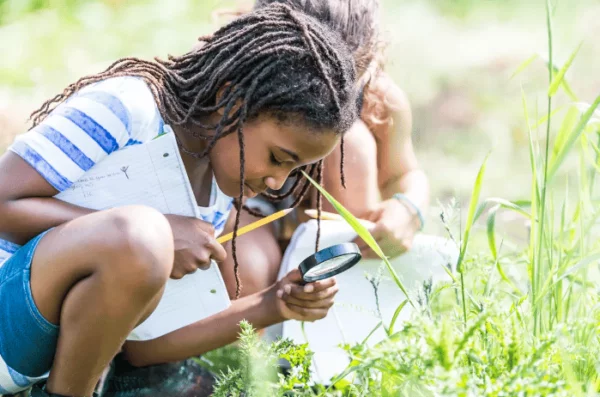By Sakeina Syed, The Globe, and Mail
Prior to this summer, Patricia Kennedy had never been to the Northwest Territories. But for the past five weeks, she’s been living in Norman Wells, NWT, teaching STEM to youth.
Each day, she heads to camp to run activities with groups ranging in age from four to 16. They work on engineering design builds, coding activities and learn about chemistry and biology. The programs are also visited by local Indigenous knowledge holders or elders, who help Indigenous youth make connections to the STEM that already exists in their own communities.
“I’ve learned so much,” says Ms. Kennedy, who is an undergraduate student at the University of Ottawa studying engineering and computer science. “It’s really opened my eyes, and it’s been an amazing experience.”
The STEM camp is an initiative run by Actua, a national organization that works to engage youth across the country with science and technology programs.
With special emphasis on bridging the “digital divide,” Actua runs programs focused on communities underrepresented in STEM fields. These include their National Girls Program, Indigenous Youth in STEM (InSTEM) Program and Black Youth in STEM Program.
“STEM equity means creating an environment, creating a space for youth regardless of their gender, regardless of their socio-economic status,” says Jennifer Ladipo, national program manager at Actua. “Creating that sense of fun and magic for all kids, all youth, all genders, all races, is really what STEM equity means to me.”
Bridging the ‘digital divide’
Jennifer Flanagan is the CEO of Actua and has been involved since she helped start a University of New Brunswick chapter more than 20 years ago.
“What has long been understood by us at Actua is that there are deep inequities in access to education writ large,” she says. “Certainly in access to experiences that enrich that education or build skills outside of that education.”
Ms. Flanagan notes that “huge improvements” have been made, such as some university programs achieving equal participation of women. However, she says that in engaging with young girls through Actua’s initiatives, the organization encounters ongoing challenges.
“Stereotypes are unfortunately alive and well,” she says. “We’re still dealing with a significant amount of systemic barriers that impact girls and young women both in the work force – which we hear about all the time – but also just in their daily lives.”
An engineer by profession, Ms. Ladipo has been committed to equity since early in her career. While in university, she started an initiative called The STEM Girl in the hopes of empowering young girls: “I started writing children’s books, trying to encourage young girls to see fascination in STEM and have role models, especially at very young ages.”
Actua STEM programs are often facilitated by youth, for youth, Ms. Ladipo says, such as the summer camps run by undergraduate students such as Ms. Kennedy.
“[It’s] giving [young people] the chance to see role models that look like them, and see people and talk to people that might have the same experiences as them,” Ms. Ladipo says. “To show them that their own experiences are valuable, that they are needed.”
Ms. Flanagan stresses the need for programs like these, now more than ever, particularly considering the number of women who left the work force through the pandemic.
“We worry that will continue to slide [women’s] progress backwards,” she says. “So this work has never before been so important to our economy.”
Science as part of everyday life
Recently, Ms. Kennedy went on a field trip with her campers during their module on plants and medicine. They gathered plants from local fields, then learned from an Indigenous knowledge holder about the different uses for those plants.
“I find a lot of the time in school, STEM concepts are very abstract, and they’re not really related to things in your community or things you might be interested in,” says Ms. Kennedy. “Showing them that STEM can be fun and interesting and relevant to their lives is important at any age.”
By developing programs in partnership with communities, Actua is able to connect lessons to what youth might already see in their own lives, Ms. Flanagan says. “In the case of our Northern outreach programs, [it’s] 20-plus years that we have been working with Northern and Inuit communities.”
Actua has grown over the years, with 1,000 undergraduate students and 350,000 youth participating in the organization’s programs. This has only been possible, Ms. Flanagan says, through a “hyper-local” focus.
“Reflecting the realities of communities is so important to us. We not only build the skills, but we show [youth] how much opportunity exists in their own communities for future engagement,” she says.
“Not only are they a part of science, but science is literally their everyday lives.”
Click here to read the full article on The Globe and Mail.



